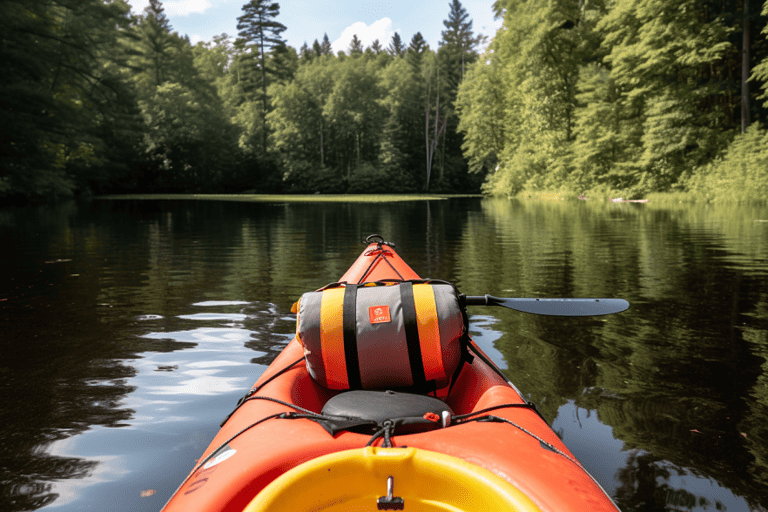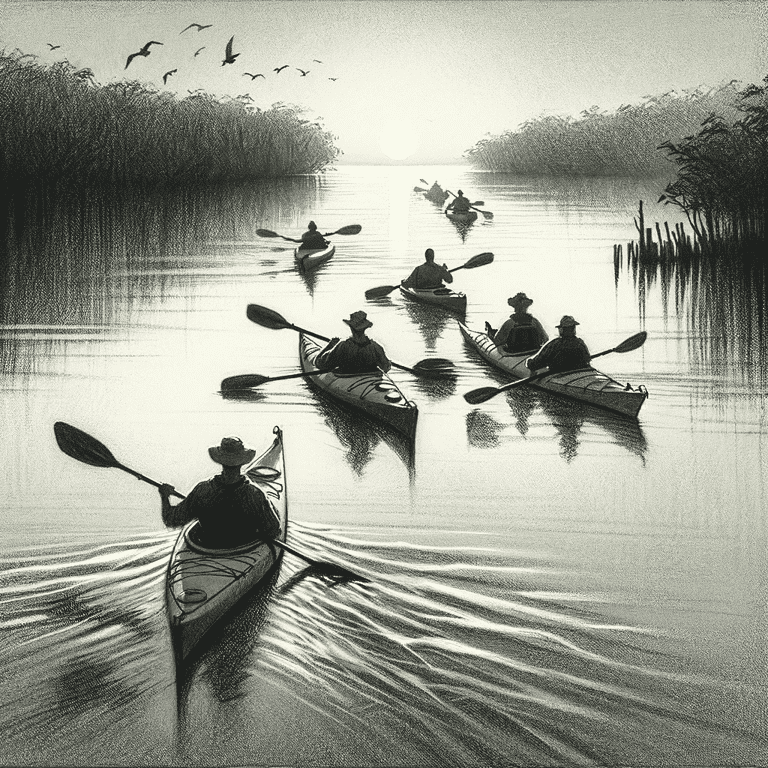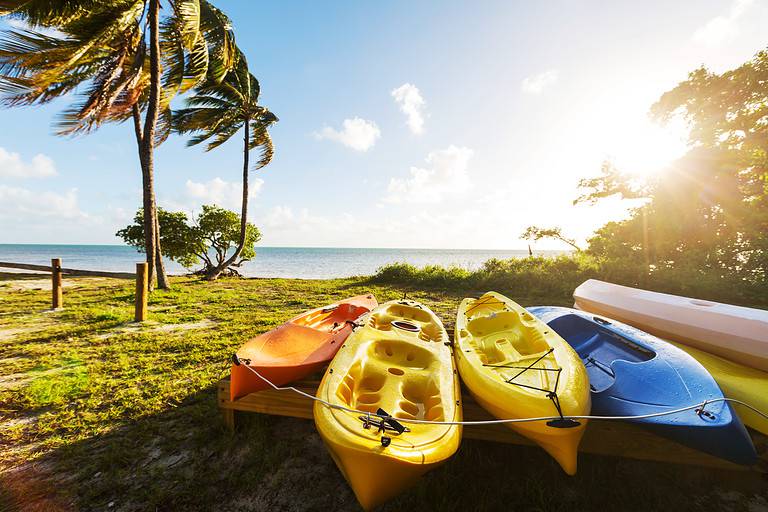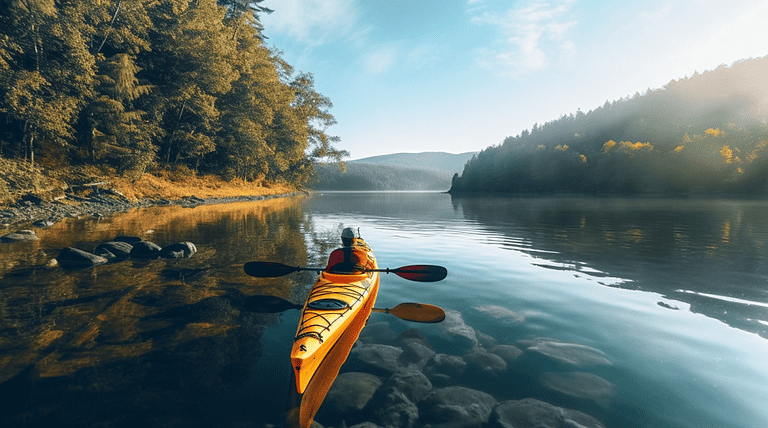Your Essential List of Kayak Safety Equipment: A Comprehensive Checklist for Paddlers
Embarking on a kayaking adventure stirs a sense of thrill and exhilaration in our hearts. Feeling the water’s rhythm beneath your kayak, maneuvering through serene or tumultuous waters, and appreciating the breathtaking beauty around you – these experiences are truly unforgettable. However, it’s paramount to understand that ensuring your safety on the water is equally as thrilling. One key to enjoying the experience is having your Kayak Safety Equipment list. Even the most experienced paddlers know that safety should not be taken lightly.
This comprehensive blog post aims to provide an extensive and essential checklist to keep your kayaking adventures safe and fun. A prepared kayaker is a safe kayaker, and arming yourself with this essential knowledge allows you to enjoy the sport while significantly mitigating risks.
1. Why is Kayak Safety Essential?
Kayak safety is not merely an option—it’s a necessity. Every paddler, from beginner kayakers to experienced canoe enthusiasts, must prioritize safety. Accidents can happen even if you don’t plan to paddle far from shore or anticipate encountering rough waters. Hypothermia, separation from your kayak, or capsizing can quickly turn an enjoyable day on the water into a dire situation. Proper safety gear can differentiate between a minor inconvenience and a life-threatening emergency.
2. Understand the Importance of Safety Gear and the need for Kayak Safety Equipment
First, understanding why each safety gear is necessary will take you a long way in your paddling safety. Each piece of safety equipment has a role in ensuring your well-being. If you capsize, a life jacket or personal flotation device (PFD) keeps you afloat. A whistle enables you to signal for help in case of emergencies. A compass guides you in open water where landmarks are far and few between. A helmet protects your head during whitewater kayaking or in rough waters. A dry bag keeps essential items like your first aid kit, repair kit, or personal items safe and dry. Understanding how each gear contributes to your safety will ensure you take them seriously.
3. How Does a Safety Checklist Enhance Paddling Safety?
A safety checklist is vital to ensure you have all the necessary safety equipment before embarking on a kayaking adventure. It should include a list of kayak safety equipment, such as a paddle, helmet, spray skirt, and dry bag. The American Canoe Association and the US Coast Guard provide comprehensive checklists which can be referred to as a baseline. Customize this to match your needs, considering the location, weather forecast, and trip duration.
4. What Safety Equipment is Required by the Coast Guard?
The Coast Guard mandates certain safety items for all kayakers. These include a PFD, a whistle or other sound-producing device, a visual distress signal (like flares for night use), and a navigation light for low light conditions. Remember that these items are not just legal requirements but are designed to keep you safe. Even for short trips, ensure you’re prepared with all these safety essentials.
5. What Items Are Included in a First Aid Kit for Kayaking?
Your first aid kit is an essential part of your kayak safety equipment. It should include bandages, gauze, adhesive tape, antiseptic wipes, tweezers, and a multi-tool. Additionally, consider packing medication for common issues like allergies, headaches, or diarrhea, especially for longer trips. It’s also advisable to carry a snake bite kit and a tourniquet, especially if you’re in a remote location.
6. Why is a Whistle Important for Kayak Safety?
A safety whistle is a small yet significant part of your safety gear. It can be heard over long distances and above the noise of wind and waves. If you get separated from your kayak or need to attract attention, three short blasts on a whistle are an internationally recognized distress signal.
7. What Role Does a Compass Play in Kayaking Safety?
A compass is a critical navigation tool when on open water. Paired with a good map, it can guide you safely to your destination and back, even when GPS or phone signals are unavailable. It’s a simple, reliable device that should be part of your essential list of kayak safety equipment.
8. Why Should You Include a Helmet in Your Kayak Safety Gear?
A helmet is essential safety gear, particularly when whitewater kayaking or paddling in rocky areas. It can protect you from injuries caused by capsizing or colliding with rocks. Even if you are a skilled kayaker, unexpected scenarios can occur, and wearing a helmet can provide critical protection.
9. How do Float Bags Contribute to Kayak Safety?
Float bags are placed in the bow and stern of your kayak to reduce the amount of water a kayak can take on if it capsizes. This makes righting the kayak easier and adds an extra layer of safety. It’s a relatively inexpensive way to make your kayak safer, particularly for long trips or rough waters.
In Conclusion
Keep these essential points in mind when preparing for your next kayaking adventure:
- Always prioritize safety, regardless of your kayaking experience or trip duration.
- A safety checklist is a great tool to ensure you have all the necessary equipment.
- Required safety equipment by the Coast Guard includes a PFD, a whistle, a visual distress signal, and a navigation light.
- Always have a well-stocked first aid kit ready.
- Essential safety gear includes a safety whistle, compass, bilge pump, helmet, and float bags.
- Even the best kayakers can face accidents—proper preparedness can mean the difference between life and death. Stay safe and enjoy your paddling!
Frequently Asked Questions
1. Why is safety essential in kayaking?
Safety is essential in kayaking as it helps prevent accidents and ensures a pleasant kayaking experience. Even for seasoned paddlers, safety measures like carrying appropriate gear, following safety protocols, and understanding potential risks are crucial.
2. What are the key items in the essential safety gear for kayaking?
The essential safety gear for kayaking includes a well-fitted personal flotation device (PFD) or life jacket, a whistle, a compass, a spare paddle, a bilge pump, float bags, and a repair kit. Depending on the situation, you may also need a helmet, a spray skirt, and a dry bag.
3. What role does a safety checklist play in paddling safety?
A safety checklist ensures you have all the necessary safety equipment before embark on your kayaking adventure. It helps to keep track of all the essential items you need for your trip.
4. What safety equipment does the Coast Guard require for kayaking?
The Coast Guard mandates that all kayakers carry a PFD, a whistle or other sound-producing device, a visual distress signal for night use, and a navigation light for low light conditions.
5. What should a first aid kit for kayaking include?
A kayaking first aid kit should include bandages, gauze, adhesive tape, antiseptic wipes, tweezers, and a multi-tool. Packaging medication for common issues like allergies, headaches, or diarrhea can also be beneficial.
6. Why is a whistle important for kayak safety?
A safety whistle can help you signal for help as it can be heard over long distances and above the noise of wind and waves. If you get separated from your group or need to attract attention, three short blasts on a whistle are an internationally recognized distress signal.
7. Why should I carry a compass when kayaking?
A compass is a critical navigation tool when on open water. It can guide you safely to your destination and back, even when GPS or phone signals are unavailable. It’s a simple, reliable device that every kayaker should have.
8. What is a bilge pump, and why is it essential for kayak safety?
A bilge pump is used to remove water from the cockpit of your kayak if it begins to fill, making the kayak unstable and possibly causing it to capsize. It’s a valuable piece of equipment that can keep you safe and dry.
9. Do I need a helmet for kayaking?
A helmet is essential safety gear, particularly when whitewater kayaking or paddling in rocky areas. It can protect you from injuries caused by capsizing or colliding with rocks. Regardless of your skill level, wearing a helmet can provide critical protection.
10. How do float bags contribute to kayak safety?
Float bags are placed in the bow and stern of your kayak to reduce the amount of water a kayak can take on if it capsizes. This makes righting the kayak easier and adds an extra layer of safety. It’s a relatively inexpensive way to make your kayak safer, particularly for long trips or rough waters.







